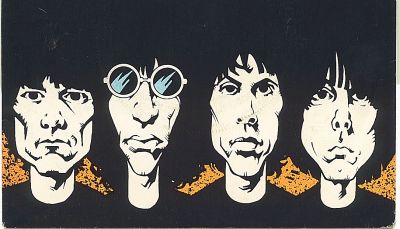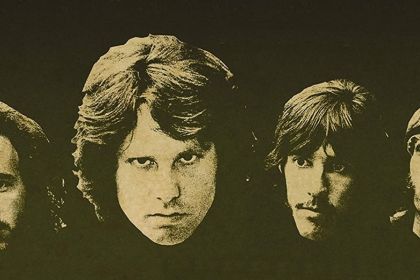SONGWRITER
I Wanna Be Sedated: pure classical harmony cementing the Ramones' hit in punk rock history

I Wanna Be Sedated Vinyl
Released in 1978 on the Ramones' fourth studio album Road to Ruin, I Wanna Be Sedated remains to be one of the most influential punk songs ever recorded by an American punk rock band. According to the band's lead singer Joey Ramone, the song was written during their intense touring and the lyrics reference an absurd situation that the Ramones had in London on a Christmas Eve.
It was their first visit to the much-desired London, but paradoxically, the guys could not find anything to do in the city paralyzed by the Christmas shutdown except to watch TV in a hotel room. So it looks like the second line of each verse—"Nothin' to do, no where to go, oh, I wanna be sedated"—references this exact setting.
A decade later, I Wanna Be Sedated got the music video showing all four band members reading periodicals at breakfast amid a collection of absurd characters that chaotically move around at abnormally fast speeds.
Watch I Wanna Be Sedated by the Ramones:
Curiously, I Wanna Be Sedated became the first track featuring Marky Ramone as a drummer who would later say that he recorded his part in just two takes and did not notice any problems that other musicians had during the recording session.
The deep and unfading influence of the song is evidenced by its widespread use in pop culture, appearing in over two dozen movies and TV shows soundtracks, half of which actually occurred in the 2000s and 2010s. Cover versions of I Wanna Be Sedated have been produced by a multitude of artists of various genres, of which a very energetic and fast version by The Offspring should be distinguished:
Although punk rock is considered to be a genre that gives birth to mostly chaotic and dissonant music, I Wanna Be Sedated is surprisingly quite euphonious as it uses genuine classical harmony based on the alternation of three main chords in the key of E major. The verses show the alternation of the tonic chord E and the main subdominant chord A while the choruses are built on the B–E chord progression expanding in the last line to A–B–E. The A-B-E sequence is the strongest cadence in classical music, usually appearing in consequent phrases to juxtapose the subdominant and dominant harmonic functions and resolve the resulting tension with the tonic chord. The solo develops against the backdrop of the same sequences, after which the sudden modulation into F sharp major makes the rest of the song all the more refreshing.
Discover more songs composed in Ionian major mode and check out their harmonic analysis in the following articles:
- 6 songs to unpack Ionian mode and the major scale
- 9 Beatles songs that combine harmonic major with Ionian mode
- Tumbling Dice: hundred reels of tape for a messy Rolling Stones mix
- D'yer Mak'er: meaning of Led Zeppelin's most controversial song
- Sugaree: Jerry Garcia's song referencing his lyricist's criminal past
- Marie Laveau: ballad of the legendary Voodoo Queen
- Statesboro Blues: no one can sing the blues like Blind Willie McTell
- Hushabye: folk roots of famous rock and roll lullaby
- Coal Miner's Daughter was forced to remove a third of the lyrics from her autobiographical song
- Seven Seas of Rhye: song of imaginary land brought to life by Ionian and Mixolydian modes
- Yakety Yak: teenager's answer to household chores in a hit song



